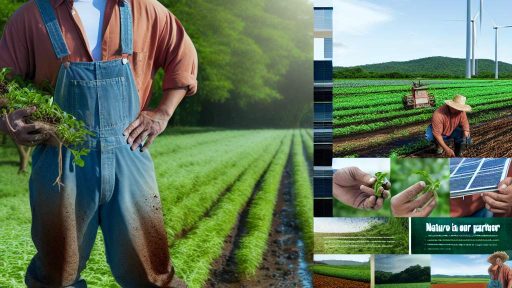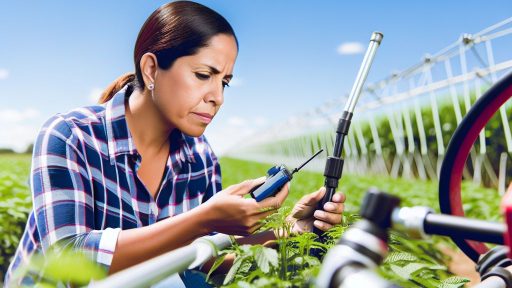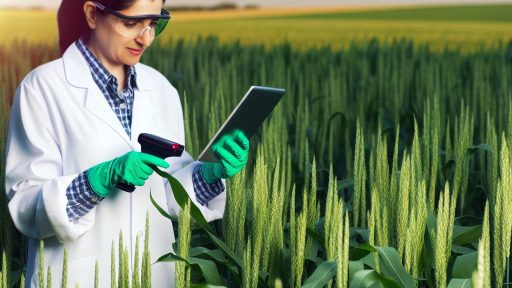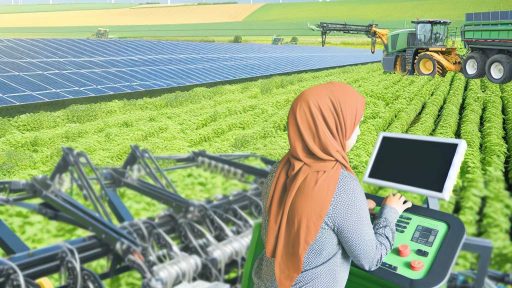Introduction to Crop Disease and Its Impact on Agriculture
Crop diseases pose significant challenges for farmers worldwide.
They can lead to substantial economic losses and food insecurity.
These diseases affect plant health, yield, and overall productivity.
Consequently, they threaten the sustainability of agricultural systems.
Types of Crop Diseases
Crop diseases can be categorized into various types.
Fungal infections are among the most common and destructive.
Bacterial and viral diseases also significantly impact crop yields.
Each type of disease requires specific management strategies.
Economic Impacts
The economic repercussions of crop diseases can be severe.
Farmers face reduced income due to lower yields.
Additionally, the costs of disease management can be substantial.
In some cases, entire harvests may be lost.
Overall, these factors contribute to increased food prices.
Environmental Consequences
Crop diseases can also harm the environment.
Farmers may resort to chemical treatments to manage outbreaks.
Transform Your Agribusiness
Unlock your farm's potential with expert advice tailored to your needs. Get actionable steps that drive real results.
Get StartedThis reliance on chemicals can lead to soil and water contamination.
Moreover, biodiversity can suffer due to monoculture practices.
Importance of Early Detection
Early detection of crop diseases is crucial for effective management.
It allows for timely interventions to mitigate damage.
Farmers can employ various technologies to enhance detection efforts.
This proactive approach ultimately supports sustainable farming practices.
Overview of Traditional Crop Disease Detection Methods
Visual Inspection
Visual inspection serves as a primary method for early disease detection.
Farmers actively check plants for symptoms such as wilting or discoloration.
This method relies heavily on the farmer’s experience and knowledge.
However, it can be subjective and prone to human error.
Laboratory Testing
Laboratory testing provides a more definitive diagnosis of crop diseases.
Farmers collect samples from affected plants and send them to labs.
These samples undergo various tests to identify pathogens.
While accurate, this process can be time-consuming and expensive.
Field Surveys
Field surveys enable a systematic approach to disease detection.
Teams of experts assess large areas for disease prevalence.
They utilize checklists and mapping tools for comprehensive data collection.
Nevertheless, surveys can be labor-intensive and require expert knowledge.
Use of Fungicides and Pesticides
Farmers often apply fungicides and pesticides preventively.
This method aims to suppress potential disease outbreaks.
However, it may lead to pesticide resistance over time.
Additionally, it poses environmental and health risks.
Limitations of Traditional Methods
Traditional methods often lack real-time monitoring capabilities.
This delay can result in significant crop losses.
Showcase Your Farming Business
Publish your professional farming services profile on our blog for a one-time fee of $200 and reach a dedicated audience of farmers and agribusiness owners.
Publish Your ProfileMoreover, environmental factors may mask visual symptoms.
As a result, many farmers seek more advanced technologies for detection.
Emergence of Technology in Agriculture: A Brief History
Early Innovations in Farming
Farming has evolved significantly over thousands of years.
Initially, agricultural practices relied heavily on manual labor.
Tools such as the plow revolutionized land cultivation during ancient times.
Farmers began to experiment with crop rotation and selective breeding.
These early innovations laid the foundation for modern agriculture.
The Industrial Revolution and Mechanization
The Industrial Revolution marked a turning point in agricultural history.
New machinery increased the efficiency of farming processes.
Tractors and combine harvesters became essential tools for farmers.
Mechanization allowed for larger fields and increased crop yields.
Consequently, it reduced the reliance on manual labor.
The Rise of Chemical Solutions
The 20th century introduced chemical fertilizers and pesticides.
These substances aimed to enhance crop production and protect against pests.
Farmers quickly adopted these technologies to maximize yields.
However, overuse led to environmental concerns and health issues.
This period marked a pivotal shift towards intensive farming practices.
Advancements in Biotechnology
The late 20th century saw the birth of biotechnology in agriculture.
Genetic engineering allowed for the development of high-yield crops.
Scientists produced varieties resistant to diseases and adverse conditions.
Such advancements aimed to improve food security globally.
However, debates arose regarding safety and ethical implications.
Entering the Digital Age
The advent of information technology transformed agricultural practices.
Farmers now utilize data analytics to make informed decisions.
Precision agriculture employs GPS technology for efficient farming.
Drones and sensors collect real-time data for better crop management.
These technologies enable sustainable farming practices and resource conservation.
The Future of Agriculture and Technology
Looking ahead, technological innovations continue to shape agriculture.
Artificial intelligence and machine learning are on the rise.
Farmers can predict crop yields and disease outbreaks more accurately.
Innovative solutions promise to address increasing food demands.
The integration of technology aims to create sustainable farming systems.
Uncover the Details: Overcoming Challenges With Genetically Modified Crop Adoption
Remote Sensing and Imaging Technologies for Disease Detection
Introduction to Remote Sensing
Remote sensing utilizes advanced technologies to monitor crop health.
Farmers can detect diseases early through accurate imaging and data collection.
This technology minimizes the need for extensive fieldwork.
Additionally, it improves the efficiency of disease management strategies.
Types of Remote Sensing Technologies
A variety of technologies support remote sensing in agriculture.
Satellite imagery provides broad coverage and detailed observations.
Drones allow for low-altitude data collection and quick responses.
Showcase Your Farming Business
Publish your professional farming services profile on our blog for a one-time fee of $200 and reach a dedicated audience of farmers and agribusiness owners.
Publish Your ProfileBoth technologies offer unique advantages for disease detection.
Satellite Imagery
Satellites capture multispectral images over large areas.
These images highlight specific wavelengths that indicate plant stress.
Farmers can identify issues like nutrient deficiencies and disease outbreaks.
Drones
Drones can fly over fields to capture high-resolution images.
They provide near-real-time information about crop conditions.
This instant feedback helps farmers make timely decisions.
Imaging Techniques for Disease Detection
Several imaging techniques enhance disease detection accuracy.
Thermal imaging measures plant temperature variations.
Infrared imaging detects changes in chlorophyll content.
These techniques reveal stress patterns before visible symptoms occur.
Thermal Imaging
Thermal imaging identifies plants suffering from water stress.
Healthy plants typically exhibit cooler temperatures compared to stressed ones.
This method helps farmers decide when to irrigate effectively.
Infrared Imaging
Infrared imaging assesses plant health based on reflectance.
Diseased plants often reflect and absorb light differently.
This technology allows early identification of potential threats.
Challenges and Future Directions
While remote sensing shows promise, challenges remain.
Data interpretation can be complex and requires expertise.
Moreover, costs associated with technology can be a barrier.
Fostering collaboration among farmers, researchers, and tech companies can drive innovation.
Enhancing Data Interpretation
Developing user-friendly software can aid farmers in data analysis.
Training programs can improve skills in interpreting remote sensing data.
Reducing Technology Costs
Investing in research can lead to cost-effective solutions.
Government initiatives may also support farmers in adopting these technologies.
You Might Also Like: Sustainable Livestock Management Systems Improving Farm Productivity
Role of Artificial Intelligence and Machine Learning in Crop Disease Diagnosis
Introduction to AI in Agriculture
Artificial intelligence (AI) is revolutionizing agriculture today.
Machine learning algorithms analyze vast data sets effectively.
This technology assists farmers in detecting crop diseases early.
Moreover, AI enhances decision-making for sustainable practices.
Data Collection and Analysis
Data is the backbone of AI in crop disease detection.
Farmers collect data from various sources, including sensors and drones.
These devices capture imagery of crops and their health conditions.
Next, machine learning models analyze this data for patterns.
They identify symptoms and predict potential outbreaks swiftly.
Image Recognition Technologies
Image recognition is a critical component of disease detection.
AI algorithms sift through images to identify disease symptoms.
These symptoms can include discoloration, wilting, or spotting.
For example, convolutional neural networks (CNNs) offer high accuracy in analysis.
Farmers can leverage this technology for timely interventions.
Showcase Your Farming Business
Publish your professional farming services profile on our blog for a one-time fee of $200 and reach a dedicated audience of farmers and agribusiness owners.
Publish Your ProfilePredictive Modeling for Disease Management
Predictive modeling helps farmers anticipate disease outbreaks.
Machine learning algorithms consider environmental factors and data trends.
Consequently, they offer forecasts on disease risks in specific areas.
This proactive approach minimizes crop losses significantly.
Integration into Agricultural Systems
AI technologies integrate seamlessly into existing agricultural systems.
Farm management software often includes AI-driven disease detection tools.
This integration facilitates user-friendly experiences for farmers.
Farmers receive real-time alerts about potential disease threats.
Case Studies of Successful Implementations
Several farms have successfully implemented AI for crop disease diagnosis.
For instance, AgriTech Innovations developed a platform for rural farmers.
This platform analyzes satellite imagery to detect crop diseases.
Similarly, CropAI uses mobile apps to provide on-the-spot disease info.
These case studies highlight the transformative impact of AI in agriculture.
Challenges and Future Prospects
Despite the advancements, challenges remain in AI adoption.
Accessibility to technology and data can hinder progress.
Furthermore, farmers may require training to use these tools effectively.
However, continued innovation promises to enhance productivity in farming.
Future developments will likely make these technologies more user-friendly.
Discover More: Innovations In Genetic Engineering For Crop Improvement
Biotechnological Innovations: Genetic Markers and Disease Resistance
The Role of Genetic Markers
Genetic markers serve as key tools in crop disease management.
They help identify specific genes related to disease resistance.
Furthermore, these markers expedite the breeding process.
As a result, farmers can cultivate more resilient crop varieties.
Recent advancements in genomics have increased marker efficiency.
Applications in Crop Breeding
Incorporating genetic markers into breeding programs proves advantageous.
First, it allows for precise selection of disease-resistant plants.
Secondly, this technique reduces the time required for traditional breeding.
Moreover, it enhances crop yields and food security.
Case Studies of Success
Notably, Dr. Maria Garcia’s team at AgriTech Innovations implemented innovative techniques.
They successfully developed a blight-resistant potato variety.
This advancement improved harvests and reduced pesticide use.
Similarly, the GreenFields cooperative utilized genetic markers in wheat breeding.
The results led to significant resistance against rust diseases.
Future Prospects
The future of crop diseases lies in continuous genetic research.
Emerging technologies like CRISPR offer exciting possibilities.
These tools facilitate targeted gene editing for enhanced resistance.
Ultimately, this research ensures sustainable farming and food supply.
Gain More Insights: Data-Driven Decision Making In Agriculture
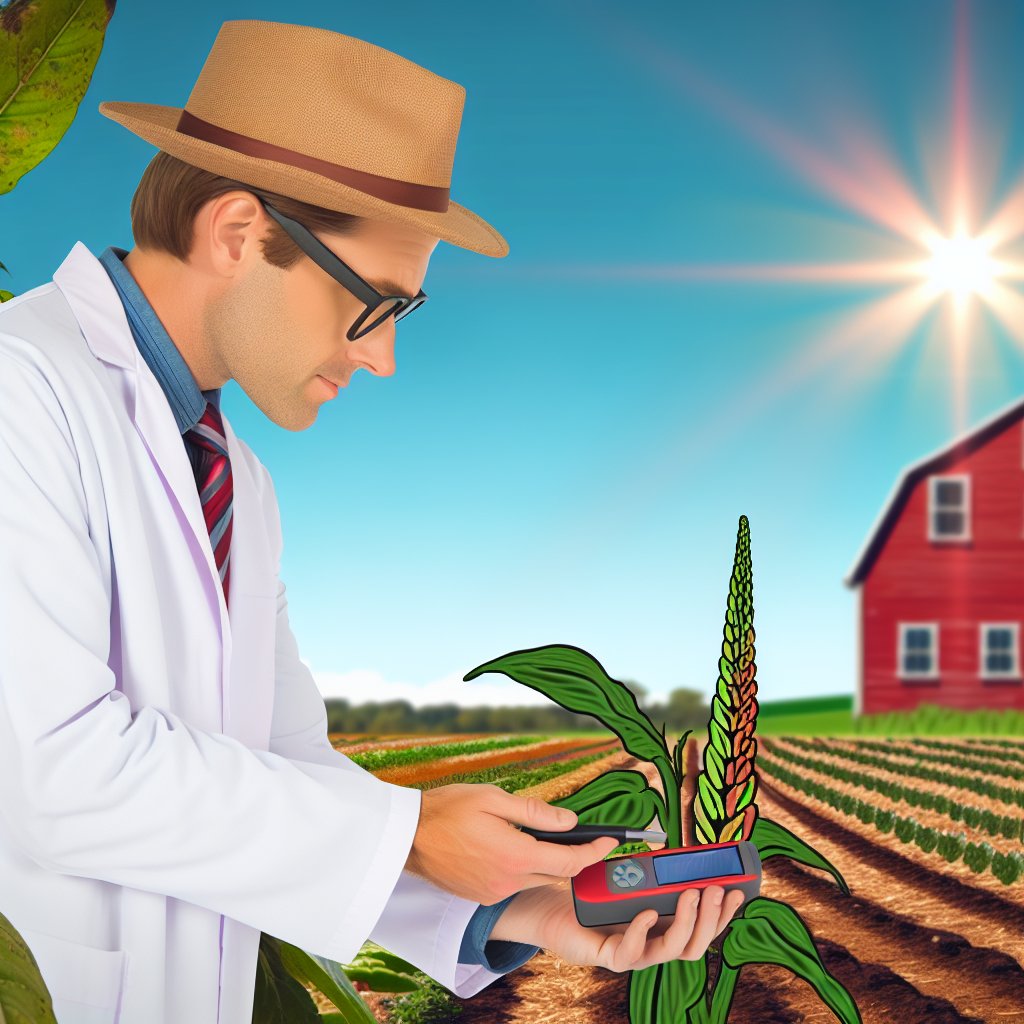
Case Studies: Successful Implementations of Modern Detection Technologies
Introduction to Case Studies
Modern technologies have transformed crop disease detection.
These advancements enable faster and more accurate diagnosis.
Showcase Your Farming Business
Publish your professional farming services profile on our blog for a one-time fee of $200 and reach a dedicated audience of farmers and agribusiness owners.
Publish Your ProfileFarmers worldwide benefit from these innovations.
Case Study: Precision Agriculture in California
California farmers utilize drones for crop monitoring.
Drones equipped with multispectral cameras capture detailed images.
These images help identify disease hotspots in real-time.
Farmers can respond promptly to protect yields.
Case Study: Machine Learning in Brazil
In Brazil, data analytics and machine learning are game-changers.
One notable agritech startup leverages AI for disease prediction.
The system analyzes weather patterns and soil data.
This proactive approach reduces crop losses significantly.
Case Study: Smartphone Apps in India
India’s farmers use smartphone apps to identify diseases.
Apps allow users to upload photos of affected plants.
AI algorithms analyze images and provide recommendations.
This solution empowers smallholder farmers with knowledge.
Case Study: Remote Sensing in Europe
European farmers embrace remote sensing technology.
Satellite imagery offers comprehensive monitoring of large areas.
This method helps detect diseases early across vast fields.
Consequently, farmers can optimize their spraying efforts.
Technological Impacts on Sustainability
These successful case studies illustrate technology’s impact.
Early disease detection helps minimize chemical usage.
Farmers can adopt more sustainable practices.
Ultimately, these technologies support food security for future generations.
Sustainable Farming Practices Enhanced by Effective Disease Management
Importance of Disease Management
Effective disease management is crucial for sustainable farming.
It directly impacts crop yield and quality.
Farmers can reduce chemical inputs through effective management practices.
This approach enhances soil health and promotes biodiversity.
Technological Innovations in Disease Detection
Modern technology plays a vital role in disease detection.
Remote sensing offers real-time monitoring of crop health.
Machine learning algorithms analyze data to predict disease outbreaks.
Additionally, mobile applications help farmers identify symptoms rapidly.
Drone Technology
Drones provide aerial imagery for quick assessments.
Farmers can identify infected areas before symptoms become visible.
This proactive approach allows for timely interventions.
Smart Sensors
Smart sensors monitor environmental conditions affecting crops.
They gather data on humidity, temperature, and soil health.
These insights help prevent disease escalation promptly.
Integrated Pest Management
Integrated Pest Management (IPM) reduces reliance on chemical pesticides.
This holistic approach combines biological, mechanical, and chemical methods.
Farmers use monitoring tools to assess pest populations accurately.
This data-driven strategy enhances the effectiveness of control methods.
Training and Education
Training programs are essential for farmers to adopt new technologies.
Showcase Your Farming Business
Publish your professional farming services profile on our blog for a one-time fee of $200 and reach a dedicated audience of farmers and agribusiness owners.
Publish Your ProfileWorkshops and online resources provide information on best practices.
Knowledge sharing helps build a community focused on sustainable practices.
The Role of Data Analytics
Data analytics offers deeper insights into crop health trends.
Farmers can make informed decisions based on historical data.
This analytical approach allows for targeted interventions.
As a result, yields can be optimized while minimizing resource use.
Collaboration with Agricultural Experts
Collaboration enhances disease management strategies.
Agricultural extension services provide expertise to farmers.
Networking with agronomists leads to better decision-making.
Experts help in developing customized disease management plans.
Future Trends in Crop Disease Detection and Implications for Farmers
Advancements in Technology
Recent years have seen remarkable improvements in crop disease detection technologies.
Farmers increasingly depend on remote sensing and imaging techniques.
These technologies help in early detection of diseases in crops.
Additionally, artificial intelligence and machine learning play crucial roles.
They analyze large datasets to identify disease patterns and offer recommendations.
Integration of IoT Devices
The Internet of Things (IoT) is revolutionizing agriculture.
Farmers now use sensors to monitor environmental conditions.
This data aids in predicting disease outbreaks before they occur.
Consequently, timely interventions can save crops and increase yields.
Moreover, IoT devices facilitate real-time communication between farmers and experts.
Adoption of Drones for Monitoring
Drones are becoming essential tools in modern agriculture.
They provide aerial imagery that helps identify crop health issues.
Farmers can monitor expansive fields more efficiently using drones.
This technology ensures that pest infestations are detected early.
Using drones reduces the need for extensive manual labor in crop monitoring.
Implications for Sustainable Farming
These technological advances contribute to sustainable farming practices.
Farmers can reduce chemical usage by identifying disease early.
This not only protects the environment but also promotes healthier produce.
Furthermore, sustainable practices enhance crop resilience and biodiversity.
Farmers who embrace these technologies will thrive in the future market.
Challenges Ahead
Despite the benefits, several challenges remain for farmers.
Access to advanced technologies can be costly for some growers.
Also, training farmers to use these tools effectively is essential.
Moreover, data privacy concerns may arise as technology becomes widespread.
Farmers must work to ensure their data is secure and used ethically.
Additional Resources
AI in Agriculture and Farming: Revolutionizing Crop Growth – Intellias

